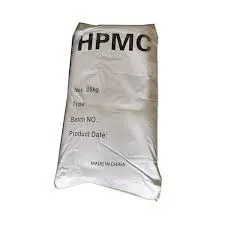
Nov . 17, 2024 19:13 Back to list
hydroxyethyl cellulose thickening mechanism
The Thickening Mechanism of Hydroxyethyl Cellulose
Hydroxyethyl cellulose (HEC) is a water-soluble polymer derived from cellulose, and it is widely used as a thickening agent in various industries, including cosmetics, pharmaceuticals, and food. The effectiveness of HEC as a thickener stems from its unique chemical structure and its ability to interact with water molecules, forming a gel-like consistency that enhances the texture and stability of products.
Chemical Structure and Properties
HEC is produced through the etherification of cellulose, where hydroxyl groups of the cellulose molecule are substituted with hydroxyethyl groups. This modification increases the solubility of cellulose in water, making HEC an ideal thickening agent. The presence of hydrophilic hydroxyethyl groups allows HEC to absorb water and swell, leading to an increase in viscosity without forming a significant gel, which can be beneficial in many formulations.
The concentration of HEC in a solution will significantly influence the degree of thickening. At lower concentrations, HEC molecules remain more dispersed, providing a smooth and flowing consistency. As the concentration increases, the hydrophilic interactions among the HEC molecules lead to a higher viscosity due to the formation of a more structured network within the solution. This thickening behavior is primarily attributable to intermolecular hydrogen bonding, where water molecules are localized around the hydroxyl groups, enhancing the polymer's ability to interact and entangle with each other.
Viscosity and Temperature Effects
hydroxyethyl cellulose thickening mechanism

The thickening mechanism of HEC is also temperature-sensitive. As the temperature increases, the viscosity of HEC solutions typically decreases. This phenomenon can be explained by the fact that higher temperatures lead to increased kinetic energy among the molecules. The energy causes the polymer chains to become more mobile, disrupting the network formed by hydrogen bonding. Conversely, cooling a solution of HEC increases its viscosity once again, as the molecular motion decreases and the hydrogen bonds can reform, reinforcing the thickening effect.
Applications in Industry
HEC's thickening mechanism makes it highly versatile in various applications. In the cosmetic industry, HEC is often used in lotions, creams, and gels to provide a desirable texture and to stabilize emulsions. Its ability to retain moisture also enhances the skin feel of many formulations. In pharmaceuticals, HEC serves as a thickener in topical ointments, ensuring that active ingredients are evenly dispersed and adherent to the skin surface, enhancing therapeutic efficacy.
In the food industry, HEC is utilized as a food thickener and stabilizer. Its clean taste and non-toxic nature make it suitable for various food applications, including sauces and dressings, where it helps maintain texture and prevents separation.
Conclusion
Hydroxyethyl cellulose's effectiveness as a thickening agent is largely due to its unique chemical structure and the mechanisms by which it interacts with water. Its ability to swell and form gels while remaining soluble enhances its versatility across various industries, contributing to improved textures and stability of products. Understanding the thickening mechanism of HEC is crucial for formulators aiming to optimize product performance while meeting consumer demands for quality and consistency.
-
tile-bonding-additives-for-stronger-bonds
NewsAug.22,2025
-
construction-grade-rdp-for-wholesale-needs
NewsAug.22,2025
-
trusted-wholesale-hec-partners
NewsAug.22,2025
-
hec-solutions-for-industrial-excellence
NewsAug.22,2025
-
construction-additives-need-hpmc-essentials
NewsAug.22,2025
-
hpmc-versatile-cellulose-ether-for-industries
NewsAug.22,2025







